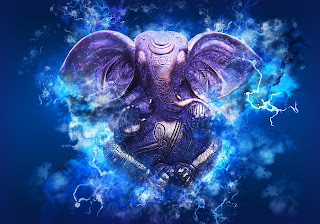Introduction 🔱
Sanatana Dharma, often referred to as Hinduism, is one of the oldest and most complex religions in the world. Rooted in the Indian subcontinent, it encompasses a rich tapestry of beliefs, rituals, traditions, and philosophies. In this blog, we embark on a journey to understand the essence of Sanatana Dharma, exploring its historical origins, fundamental principles, sacred texts, and diverse practices. Join me as we delve into the depths of this timeless spiritual tradition.
I. Historical Origins
Sanatana Dharma finds its roots in the ancient civilization of the Indus Valley, dating back over 4,000 years. It evolved organically through the integration of various cultural and religious influences, resulting in a diverse tapestry of practices and beliefs. We'll explore the Vedic period, the Upanishadic era, and the subsequent development of Hindu philosophy and theology.
Central to Sanatana Dharma are a set of fundamental principles that underpin the religious and philosophical aspects of Hinduism. We'll delve into concepts such as dharma (duty/righteousness), karma (law of cause and effect), samsara (cycle of birth and death), and moksha (liberation from the cycle of rebirth). Understanding these principles is essential to grasp the core essence of Sanatana Dharma.
III. Sacred Texts
Sanatana Dharma has a vast array of sacred texts that form the foundation of its teachings. The Vedas, including the Rigveda, Samaveda, Yajurveda, and Atharvaveda, are considered the oldest and most authoritative texts. We'll also explore the Upanishads, the Bhagavad Gita, the Ramayana, and the Mahabharata, among others. Each text offers unique insights into various aspects of Hindu philosophy, spirituality, mythology, and ethical principles.
IV. Gods and Deities
Hinduism is renowned for its pantheon of gods and goddesses. We'll explore the major deities, such as Brahma, Vishnu, Shiva, Lakshmi, Saraswati, and Durga, as well as their significance in Hindu mythology and religious practices. We'll also delve into the concept of avataras (incarnations) and the Trimurti (the divine trinity of Brahma, Vishnu, and Shiva).
Sanatana Dharma encompasses a vast spectrum of rituals and worship practices. From elaborate temple ceremonies to personal daily rituals, we'll explore the significance of rites such as puja (worship), yagna (fire sacrifice), and pilgrimage. We'll also delve into the importance of festivals like Diwali, Holi, and Navaratri, which celebrate various aspects of Hindu mythology and provide a vibrant expression of devotion.
Sanatana Dharma offers diverse philosophical schools and spiritual paths for seekers to explore. We'll touch upon the concepts of Advaita Vedanta, Yoga, Karma Yoga, Bhakti Yoga, and Jnana Yoga, each offering a unique approach to understanding the nature of reality, self-realization, and the path to liberation. We'll also discuss the contributions of renowned Hindu philosophers and spiritual leaders throughout history.
VII. Contemporary Relevance
In this section, we'll discuss the contemporary relevance of Sanatana
Dharma. We'll explore its impact on art, music, dance, architecture, and literature. We'll also examine the challenges faced by Hinduism in the modern world, including misconceptions, cultural appropriation, and the importance of fostering interfaith dialogue.
Conclusion
Sanatana Dharma stands as a testament to the enduring spiritual heritage of India. With its profound philosophical insights, vibrant rituals, and diverse spiritual paths, Hinduism continues to inspire millions worldwide. By understanding the historical origins, fundamental principles, sacred texts, gods and deities, rituals, and contemporary relevance of Sanatana Dharma, we can gain a deeper appreciation for this ancient and ever-evolving tradition.


.jpg)





Comments
Post a Comment